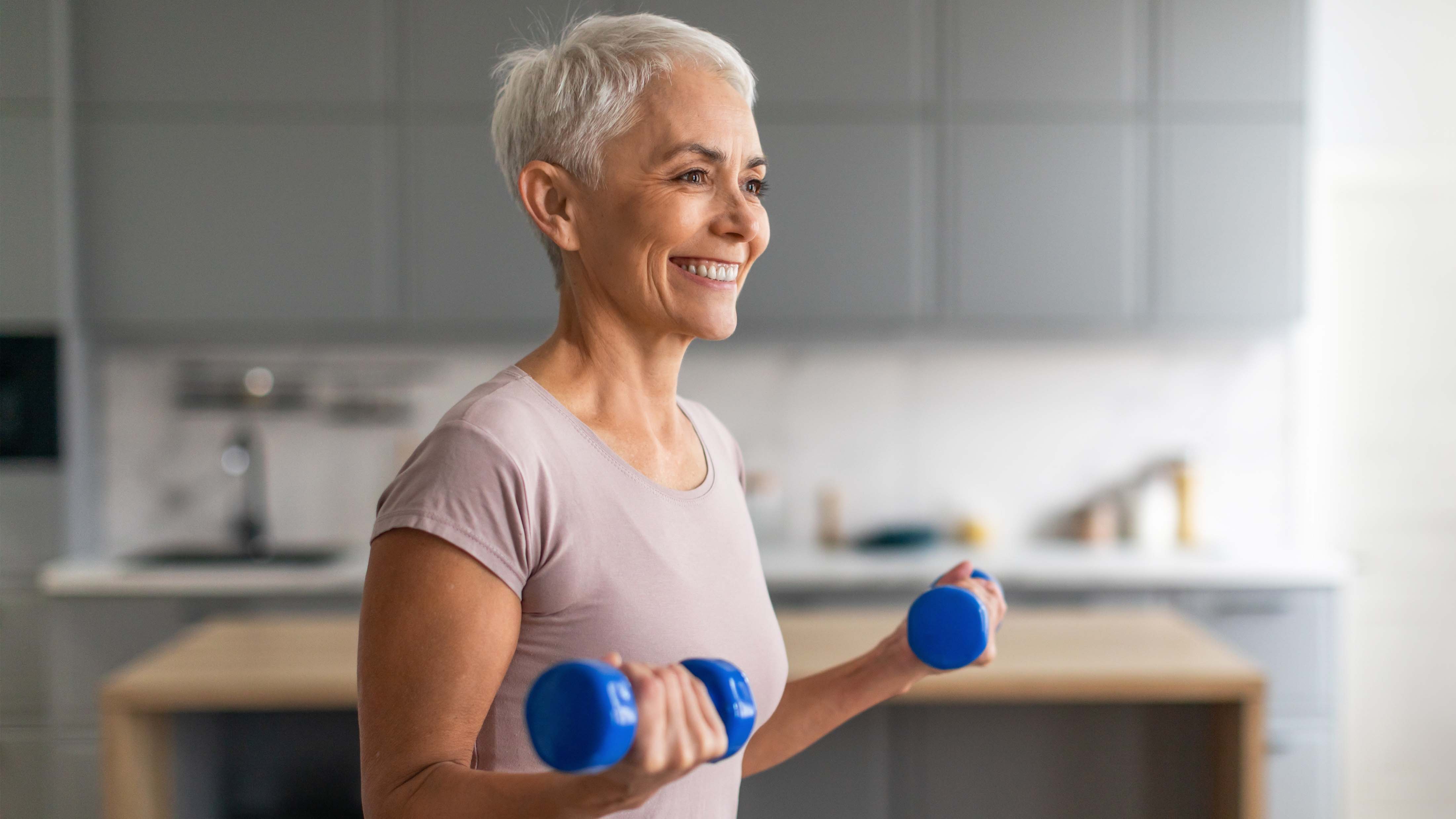During perimenopause and menopause, women experience a loss of muscle mass and an increased chance of bone density loss. One way to counteract these changes is to use weights or resistance bands to build and strengthen your muscles.
Strength training doesn’t have to mean hours in the gym — in fact, you can invest in a set of the best adjustable dumbbells and improve your fitness from your living room.
If you’re new to lifting weights, it can be tricky to know where to start. To help, we’ve found this 20-minute Joe Wicks menopause workout. All you’ll need is an exercise mat and a set of dumbbells.
If you’re a complete beginner, you might want to ask a personal trainer for support, but if not, try following this workout in front of a mirror so you can check your form and watch Joe at the same time.
What is the workout?
During and after menopause, you want to avoid putting a huge amount of stress on the joints, so this workout removes any jumps or impact. You’ll need at least one set of dumbbells, although if you have them, you might want a heavier set for the lower body exercises and a lighter set for the upper body.
You’ll do 10 different exercises in this workout, and repeat them twice. You’ll work for 40 seconds, then have a 20-second rest. If you need to, you can always press pause on the video, or shorten the amount of time you’re working — try doing the exercise for 30 seconds, then resting for 30 seconds. There’s a timer on screen at all times, so you’ll know how long you have left.
When it comes to finding the right weight for your workout, you’ll want to select something challenging, but not impossible, for the final few reps. If you’re really struggling to lift the weight, it’s probably too heavy. You’ll still see results lifting lighter weights, and moving with good form is better than putting yourself at risk of injury.
Here are the exercises involved in the workout:
You can follow along with Joe during the workout.
Watch On
What are the benefits?
There are several benefits to strength training during perimenopause and menopause.
Counter the loss of muscle mass
One study found that compared to women in early perimenopause, women who had gone through menopause had 10% less muscle mass in their arms and legs.
Strength training can help maintain and build muscle in the body. Lifting weights increases the load on the muscles, forcing them to work harder and grow.
Improve bone density
Menopause speeds up bone loss and increases your risk of osteoporosis, with 1 in 10 women over the age of 60 being affected. This increases the risk of fractures or breaks in the bone. Building strong muscles can improve bone density and reduce your risk of osteoporosis and injury.
Improve flexibility
Menopause can cause muscle aches, joint pain and make you less flexible. Again, strength training, whether lifting weights, doing exercises with resistance bands, Pilates, or yoga, or just going out on daily walks, can counteract this. Strengthening the muscles in your body can help improve your flexibility and stability.
Help maintain, or lose weight
During menopause, estrogen levels reduce, and visceral fat can increase from 5-8% to 10-15%. This is the fat that wraps around your heart and organs. Exercise can help boost your metabolism and lower the risk of unhealthy fat gain.
If weight loss is your goal, you’ll want to ensure you’re in a calorie deficit — this means burning more energy than you consume. An easy way to keep track of your calorie expenditure is by investing in one of the best fitness trackers, which shows you at a glance how active you’ve been.
Boost your mood
The hormonal changes during menopause can leave you feeling unmotivated. You might also be struggling to get a good night’s sleep, with night sweats and hot flashes being common side effects. Exercise can help boost your mood and improve sleep.
If you are struggling with your mood, why not meet a friend and head for a walk outside? Walking in nature is also good for your mental health, plus research has shown that walking outside, rather than on the treadmill, lowers your levels of the stress hormone cortisol.
Raised levels of cortisol can lead to an increased appetite, with fatty, sugary foods often the first choice. High cortisol levels have also been linked with an increase in abdominal fat.
Exercise is important at all stages of life, but if you’re looking to ease the symptoms of menopause, adding more movement to your daily routine can help.
To make a long-term change, you’ll need to find a form of strength training you enjoy, whether lifting weights, heading to your local pool, or taking a Pilates class.
Try different workouts, find what’s best for you and remember that any movement is better than none!








